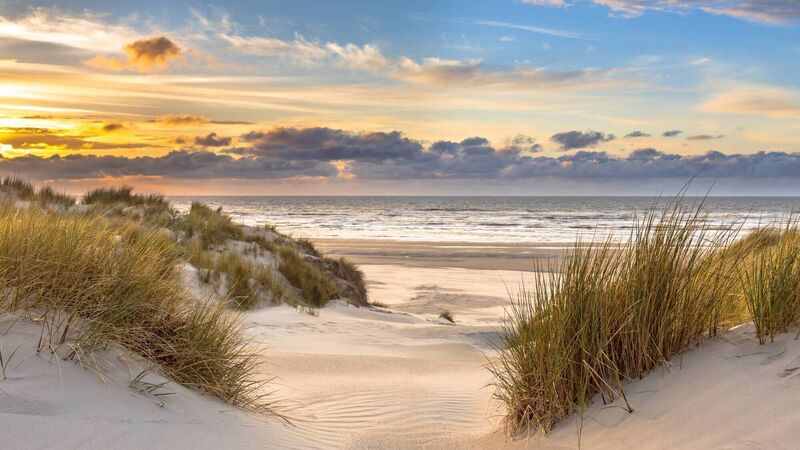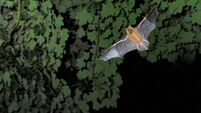Anja Murray: IPCC report shows safeguarding nature is crucial to securing liveable future

In respect of coastal flooding and storm damage, risk reduction can be achieved by protecting and restoring coastal habitats such as saltmarshes, mudflats and sand dunes. Picture: iStock
It’s easy to despair and easy to disengage. Hope, on the other hand, comes about when we face up to enormous challenges and address them.
At the end of February, the Intergovernmental Panel on Climate Change (IPCC) published a major report about climate change impacts and how we can adapt. The report details the growing extent of loss, damage and suffering that is already evident because of climate change and the consequences of our inaction to date.
The summary report, the bit that I’ve been reading, is packed with solid scientific statements and clear and urgent messages detailing actions required and evidence-based solutions to address what is happening.
Reading the report, the Gaia hypothesis comes to mind. The Gaia hypothesis proposes that the Earth functions as a living entity. Interconnected feedback loops maintain a self-regulating planet that works like a living organism. Each component: the living biosphere, the water cycle, the atmosphere, the oceans, all interact in ways that maintain the stability of the whole.
When James Lovelock put forward this Gaia theory in the 1970s, while working with Nasa, it was dismissed as wacky by most of the scientific community. There is still no general scientific acceptance of this hypothesis. I, however, find it to be a useful framework for understanding the interconnectedness of earth systems.
Another example of interconnectedness is how the dramatic rise in greenhouse gasses in the atmosphere is destabilising almost every other planetary system. For too long now, we have ignored the role of natural forests, bogs, ocean ecosystems, soil biota, and an endless variety of ecosystems in maintaining the conditions suitable for life on earth.
This is one of the major themes of the IPCC report released last week: ‘Impacts, Adaptations and Vulnerability’. The report has been collated by 270 authors from 67 countries and incorporates more than 34,000 cited scientific references. It identifies the strong interactions between ecosystems, global climate and human society, and confirms how it is no longer feasible to view these things as separate.
There is a great deal in this report about adaptation. Adaptation addresses how we can reduce risks to people and nature from the impacts of climate change.
It addresses the ways in which we can reduce risks arising from:
- heatwaves and droughts;
- more frequent and severe storms;
- more intense rain and flooding;
- rising sea levels and coastal inundation;
- ongoing ecosystems degradation;
- and the increasing severity of pests and diseases that result from climate change.
The report details, in strong scientific terms, how we can reduce the risks of flooding by restoring wetlands (such as peatlands), natural river systems, and forested upper catchments. It outlines the importance of slowing water flow throughout river catchments, rather than speeding it up through actions such as wetland drainage and river dredging.
In respect of coastal flooding and storm damage, risk reduction can be achieved by protecting and restoring coastal habitats such as salt marshes, mudflats and sand dunes.
Increasing food insecurity across the globe is examined too. We can adapt to food insecurity by diversifying farms and agricultural landscapes, reducing reliance on highly-specialised modes of production and on monocultures.
Food production systems can adapt by working with natural processes to support food security. The report identifies an important role for agroforestry, too, where crops are grown or livestock graze among trees, and even a role for urban agriculture.
Adaptation for forestry includes diversifying and adjusting tree species' compositions to build resilience, a particularly pertinent point for forestry in Ireland where we still have an extreme overreliance on Sitka spruce. Restoring natural forests and drained peatlands enhances the resilience of carbon stocks and sinks in forest and peat soils, as well as attenuating flooding and improving water quality.
The report similarly addresses how healthy habitats out at sea, such as the kelp forests, cold-water coral reefs, and seagrass beds in Irish waters, can soak up carbon, buffer against storms, and nurture productive ecosystems out at sea.
The scope of scientific knowledge contained in this report makes it unarguably clear that safeguarding nature is crucial if we are to secure a liveable future. This will require widespread restoration of natural ecosystems.
It is good to know that there are so many options to adapt to a changing climate. But adaptation cannot be limited to countries that can afford to invest. Many of the countries which are most vulnerable to climate change are in the global south. There is a real injustice in this, considering that these countries have done the least in contributing to the problem.
At worst, humanitarian crises arise when climate hazards interact with high vulnerability. Adaptation for countries in the global South will require finance from us, to develop and implement actions. Ireland has a good track record in providing funds for development and adaptation projects in the global South, but we are now falling far short of our commitments to provide climate finance to support countries with adaptation and mitigation projects.
They say that hope is an act of defiance. When we face up to just how much the near future is frightening, we can wallow in despair, or nurture hope. We have the knowledge to inform transformative action.
This IPCC report highlights many feasible and effective solutions to reduce climate risks and foster greater climate justice. We have seen profound social shifts before, many relatively recently. We now have a narrow window for action to enable climate-resilient development.
There is little room for despair or disengagement. Hope requires that we face up to reality, acknowledge uncertainty and act upon the potential for change.
- Anja Murray is an ecologist, broadcaster, regular presenter on ‘Eco Eye’ on RTÉ 1 and writes a weekly ‘Nature File’ on RTÉ Lyric FM.
CLIMATE & SUSTAINABILITY HUB









